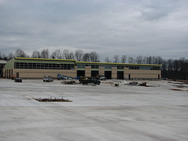WMATA budget deep dive, part 6: Are there capital projects that can be deferred?
WMATA proposed budget to close a $189 million gap for FY 11 contains substantial fare increases and service reductions on bus and rail. As an alternative to the some of the more draconian measures proposed, some have suggesting using of capital funds for operating expenses. We shouldn’t dismiss this entirely out of hand.
In a previous post, I listed some criteria for deciding whether to use capital funds for operating costs. In FY10, WMATA used about $30.1 million of capital funds, plus another $10 million in one-time “stimulus” funds designated for capital projects.
“Preventive maintenance,” or the scheduled change-out of parts, can be an operating or capital expense. But if done regularly, it reduces the need for capital expenditures later to replace pieces of equipment. Therefore, it’s reasonable to use capital dollars in these cases and it is a permissible use of federal capital funds.
One example could be changing out bus farebox components. These are often out of order, which means passengers ride free, and the agency doesn’t collect fares that passengers are willing to pay. More preventive maintenance might also be done on escalators.
Regardless of the ultimate use, utilizing capital money for expenses currently paid for out of operating costs would require postponing or canceling a scheduled capital project. Such projects should have the least effect on service. WMATA should also identify a way to “pay it back” and replace the capital funds in future budgets, so that the agency doesn’t become dependent on spending its capital funds for operating costs each year.
WMATA has identified a number of potential capital project deferrals in its budget. Most are not good projects to defer. Bus replacements, station entrance canopies, and replacing automatic vehicle locating devices are necessary to maintain the system. 8-car train power upgrades and bus priority corridor improvements bolster service reliability. Open bankcard and automatic fare collection systems improve customer service. And bus camera installation aids safety.
However, there are two projects that could be deferred without a significant impact on service: the purchase of additional fare card machines and making improvements at the new West Ox bus garage.
WMATA says the effect of deferring purchase of additional fare card machines “…will defer installation of machines where ridership has increased.” However, rail ridership is currently down 1% over last year and SmartBenefits users will soon no longer have to go to the farecard machines to load benefits. This reduces the need for more machines. Purchasing more machines may be necessary over time, but WMATA could use the $6.48 million for other needs now without an adverse effect.
With at least some bus service reductions likely and future expansion plans on hold, it may also not be necessary at this time to upgrade the West Ox bus garage. This project would cost $1.5 million. Based on my understanding, WMATA is still not utilizing this garage at capacity. This project probably could be deferred unless there is a compelling reason to move forward at this time.
A possible third project involves bus purchase. WMATA expects to save nine “peak” buses from consolidating bus stops on 4 lines in the District and at various places in Maryland and Virginia. It also has an ongoing capital program to replace approximately 100 buses per year. This program would cost $73.3 million in FY 11. Reducing the program from the scheduled 100 buses to 91 buses in FY 11 would save $6.6 million that could be used for preventive maintenance in the FY 11 operating budget.
Together these three projects total $14.6 million. That can pay for a lot of the bus or rail service planned to be cut. While bridging the gap until economic recovery takes hold is a worthwhile goal, it’s still necessary to figure out how to put the money back in future years so that the projects don’t get deferred forever.
The best way to do that is through efficiency measures that will reduce operating costs. WMATA has identified traffic “choke points” for buses throughout the region. If bus priority measures were applied to these “choke points” on corridors with high bus frequencies, WMATA estimates it could save about $5 million annually. These require only simple measures, just paint and signage with some enforcement and limited capital investment.
Expanding the spacing of bus stops on major arterials from the proposed four bus lines in the District to 10 or so would likely increase these operational savings by another $1-2 million. Securing jurisdictional commitments to work with WMATA to implement these measures would be one way to free up funds from the operating budget and return them to the capital budget.
Another measure that WMATA could implement is the increased use of eight car trains during peak periods, as Erik wrote this morning. I estimate this could save over $1 million annually.
Together, these measures could allow WMATA to defer the farecard machines and West Ox garage, restore some service, then pay back the money in future years. As for the money for the nine buses, as the recession ends ridership should increase again, bringing in more revenue. The jurisdictions should agree to reinstate the capital money before decreasing their jurisdictional contributions.
Next: Other potential revenue sources in the budget.

